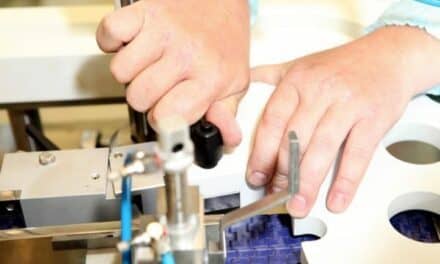In March, the Food and Drug Administration (FDA) announced it was accepting comments regarding medical device service, refurbishment, repair, reconditioning, and modification by OEMs, third parties, and healthcare organizations through May 3, 2016. Now, the Association for the Advancement of Medical Instrumentation (AAMI) has released guidance on its website aimed at helping individuals and organizations respond in the most comprehensive manner possible.
“The FDA needs to hear from a broad cross section of stakeholders in order to gain a balanced perspective on the issues,” said AAMI President Mary Logan. “We will be filing comments to provide objective information to the FDA, but our focus will be on the entire industry, not any one specific domain.”
AAMI notes that the FDA may not necessarily believe a problem exists that needs to be fixed through regulation. But in order to make an accurate judgment, the agency needs a broad, thorough sampling of information from all parties involved. According to AAMI, that involves “OEMs; parts companies; third-party service and repair companies; ISOs; in-house HTM departments in hospitals and other healthcare delivery organizations; companies that sell used equipment; specialty organizations; group purchasing organizations; and anyone who is involved with or impacted by the refurbishing, reconditioning, rebuilding, remarketing, remanufacturing, servicing, and repair of medical devices.”
In its original statement, the FDA outlined seven questions it wants answered, including an overview of the stakeholders involved, evidence of specific safety issues, and potential risks associated with performing defined repair activities. AAMI says it will take the lead on addressing the industry overview, and it has prepared a number of follow-up questions for the remaining points.
For example, in response to evidence of actual problems with medical devices resulting from third-party repair and maintenance, AAMI provides the following “food for thought”:
…What data do you have about the percentage of “bad” service/repairs and what is the cause? If you have records/data showing that you service, for example, 10,000 devices a year and only 1 device a year has a problem with service, then that’s important information to share with the FDA. What can you say about the “causes” of those problems?…Education and training (are there more problems if an employee is not competent or well educated/trained); budget challenges (do budget challenges impact actual problems); bad parts (eg, if the original OEM or a replacement OEM or non-OEM battery in a device is not very good, what problems does that cause)…
AAMI also encourages respondents to include background information on themselves and their organizations (including CBET and ISO certifications), and any processes in place to ensure verification and validation.
In addition, 24×7 editorial board member Pat Lynch has supplied the following sample disclaimer language for biomeds submitting their responses to the FDA. HTM professionals who are worried about offering their comments can use this language to distinguish their views from those of their employer:
The statements and experiences expressed in this letter are my own, and are the results of my years of experience in the HTM field. They have not necessarily occurred at my present place of employment, nor do the opinions necessarily reflect those of my present employer.
The full list of AAMI talking points is available on AAMI’s website.





What are the 7 questions that the FDA wants answers to? Knowing that would be helpful and where to send our comments would also be helpful. With the latest CMS regulatory changes, and now the FDA wanting to evaluate 3rd party organization, we all better get ready to pay more for service since we will not have a choice other than the OEM.
We are not able to get service information (Technical Service manuals), Parts, and Training from the OEM’s now. They will send us inflated invoices and the run-a-round on timely service.
We do get some wonderful OEM service technicians. They do a great job and document well. This is not the norm. As a Manager of an In-House program, it has become my routine job to hold vendors (OEMs) accountable to provide good service.
We ahve had many recent events of multiple service events to fix a single problem. So, improvement is needed with OEM’s. The CMS regulatory change has cause more of a service monopoly.
AAMI should be working to hold the OEM accountable as well. We have a routine of OEM’s violating the Sherman Anti-Trust Act and the Clayton Act by stating that Technical Service Manuals contain “proprietary” information that would harm their business and technology position. That is why they have patents. The FDA 510K process actually allows other companies to design products that are similar in function to not have to perform all the pre-market trials.
Our Health system is purchasing equipment, and these manufactures refuse to comply with our requests for Technical Service Manuals. There are no teeth in the NFPA 99 10.5.3.1 code. AAMI does not set any standards or guidelines that Manufactures should follow in providing reasonable service documents.
We as Biomedical Technicians (In-House) are becoming obsolete since the OEM’s are stronger lobbyist than we are. They are getting big government to support their monopolies. The safety of the Patient is not at the center of this issue. It is the money. Always the money.
This is a sad situation only getting worse. Keep up the fight to protect our Patients with safe, meaningful, tiemly and affordable service to Medical Equipment!
Links to the seven questions added!
“Third party” in the headline is a bit misleading in that, as is said better in the body, the FDA is interested in activities of the manufacturer (1st party?), the equipment owner (2nd party?), and non-owners (3rd party). Alternatively third party means everyone other than the OEM, and there is no second party–which would be curious terminology.